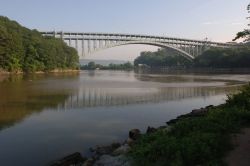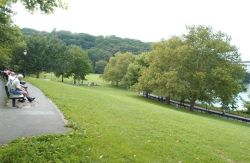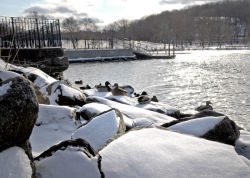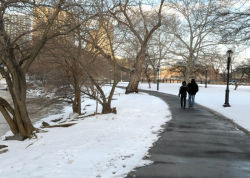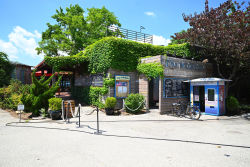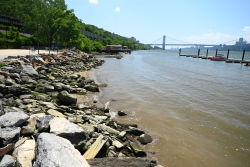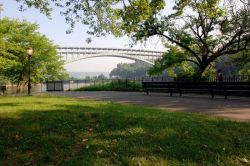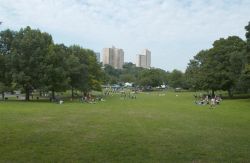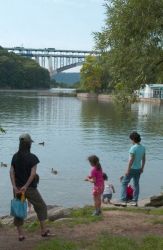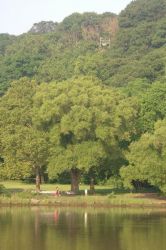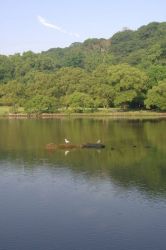Inwood Hill Park
The Daily Plant : Wednesday, February 19, 2003
FALL NRG PROJECTS WILL LEAD TO A GREEN SPRING
This fall was a productive season for the Natural Resource Group (NRG) Forest Restoration team. The team was made up of 11 full-time foresters and 2 apprentices and was occasionally assisted by other NRG staff and 8 volunteer and school groups. During the fall season, the team planted a total of 10,101 trees and shrubs and 23,274 plants. They also hosted 12 volunteer events, stabilized several eroding areas, and planted 112.5 pounds of native groundcover seed.
The tree and shrub plantings took place in six parks in Queens, Manhattan, and the Bronx, and were comprised of 9,886 containerized trees and shrubs and 215 balled and burlapped trees. All together, the plantings included 44 species of trees and shrubs. At 1,217 plantings, the most popular tree was the Northern red oak, and with only 3 plantings, the most unusual tree was the American linden.
The groundcover plantings represented 45 species and took place in six parks in the Bronx, Manhattan, and Queens. Many of the plantings made barren areas greener and included favorites such as Blueflag iris, Virginia creeper, Blue-stemmed goldenrod and Woodland sunflower. Groundcover plantings help to reduce sedimentation and pollution by stabilizing steep, eroded slopes. They are planted in a biodegradable netting which ensures that the root systems of the plants will become firmly established and work their anti-eroding magic.
Eroding areas were also repaired through a process called streambank stabilization. The majority of this work occurred along the Bronx River and in Inwood Hill Park. Erosion repair involves regrading portions of eroding streambanks and slopes, and stabilizing them with biodegradable coconut fiber logs, wooden logs and rocks. The biodegradable structures help to trap sediment on slopes and streambanks so that plants can take root in the area and grow strong. Surfaces prone to erosion are also covered with various geotextile mats and blankets and planted with woody and herbaceous plant material. While the fabric and fiber provide immediate erosion control, it is the roots of the plant material which provide long-term stabilization.
The Forest Restoration Team’s projects are sleeping now, and in some cases, nearly invisible to passers-by, but in the spring, when everything begins to bloom again, their work will be more noticeable. Riverbanks that were muddy and dangerous will be covered with plant growth, and the natural forests in Alley Pond, Inwood Hill and other parks will seem a little greener. The best part of their work is that their successes will be repeated and improved every spring, as the trees and shrubs they’ve planted grow and become more firmly established in the soil.
Written by Hannah Gersen
QUOTATION FOR THE DAY
"Famous remarks are very seldom quoted correctly."
Simeon Strunsky
(1879-1948)



